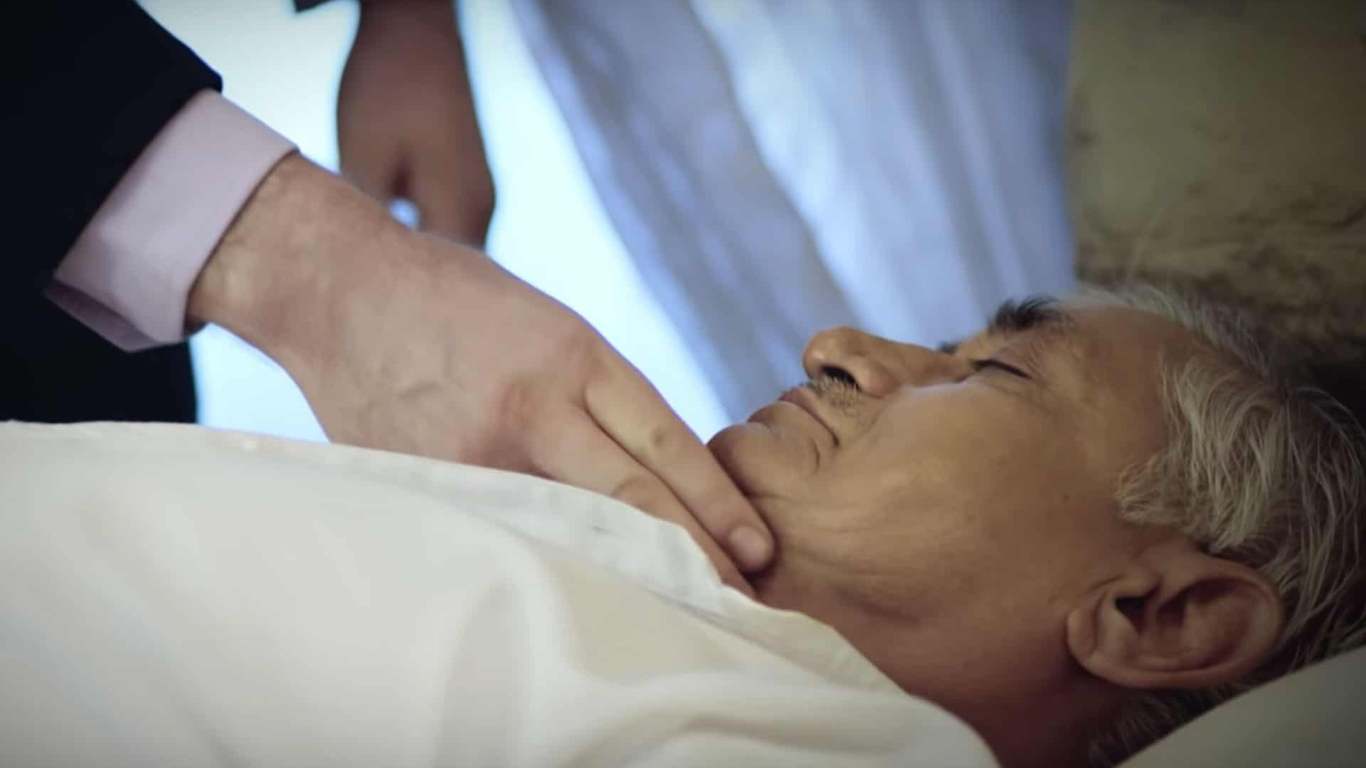The death of Lal Bahadur Shastri, India’s second Prime Minister, remains one of the most enigmatic and debated events in the nation’s history. On January 11, 1966, Shastri passed away under mysterious circumstances in Tashkent, Uzbekistan, just hours after signing a historic peace agreement with Pakistan. As of March 27, 2025, his death continues to intrigue historians, researchers, and the public, with questions lingering about whether it was a natural demise or something more sinister. This comprehensive guide—spanning 3000+ words—will explore every facet of the death of Lal Bahadur Shastri, from his life and legacy to the official account, conspiracy theories, investigations, and recent developments. Written in an informational tone for readers eager to learn, this blog post aims to shed light on this enduring mystery. Let’s dive into the story of Shastri’s untimely end and why it still matters today.
Who Was Lal Bahadur Shastri?
Before delving into the death of Lal Bahadur Shastri, it’s essential to understand the man himself. Born on October 2, 1904, in Mughalsarai, Uttar Pradesh, Lal Bahadur Shastri was a humble freedom fighter who rose to become India’s Prime Minister from June 9, 1964, until his death in 1966. Known for his simplicity, integrity, and dedication to the nation, Shastri was a key figure in India’s post-independence journey.
Early Life and Career
Shastri grew up in a modest family, losing his father to the plague at age two. Inspired by Mahatma Gandhi, he joined the independence movement, enduring multiple imprisonments. After 1947, he held key roles like Home Minister and Railway Minister, earning a reputation for honesty—famously resigning in 1956 after a train accident to take moral responsibility.
Prime Ministerial Tenure
Shastri succeeded Jawaharlal Nehru in 1964 during a turbulent time—food shortages, economic strain, and the looming 1965 Indo-Pak War. His slogan “Jai Jawan, Jai Kisan” (Hail the Soldier, Hail the Farmer) rallied the nation, and his leadership during the war secured a military victory. On January 10, 1966, he signed the Tashkent Declaration with Pakistan’s President Ayub Khan, ending hostilities—a triumph overshadowed by his death hours later.
The Official Account of Shastri’s Death
The death of Lal Bahadur Shastri occurred in Tashkent, where he was staying at a government dacha (villa) after the peace talks. Here’s the official narrative:
Timeline of Events
- January 10, 1966: Shastri signs the Tashkent Declaration at 4 PM, attends a reception, and returns to his dacha by 10 PM.
- January 11, 1966: Around 1:30 AM, Shastri reportedly feels unwell, coughing and asking for water. His personal staff, including valet Ram Nath, assist him. By 1:50 AM, he’s pronounced dead.
- Cause of Death: A heart attack, attributed to cardiac arrest, confirmed by Soviet doctors and an Indian team led by Dr. R.N. Chugh.
Autopsy and Return
- No formal autopsy was conducted in Tashkent due to logistical constraints and family consent issues. Soviet doctors performed a medical examination, noting no external injuries.
- Shastri’s body was flown back to Delhi on January 11, arriving by 2 PM, and his funeral took place on January 12 at Vijay Ghat, attended by thousands.
Government Statement
The Indian government, under Acting PM Gulzarilal Nanda (and later Indira Gandhi, sworn in January 24), accepted the heart attack explanation. Shastri had a history of heart issues—suffering attacks in 1959 and 1965—lending credence to the official cause.
Circumstances Surrounding the Death
The death of Lal Bahadur Shastri raised eyebrows due to its timing and oddities in Tashkent. Here’s what fueled suspicion:
Unusual Details
- Suddenness: Shastri appeared healthy during the day, laughing and dining with delegates, yet died within hours.
- Isolation: He was alone with minimal staff when he fell ill, with no immediate medical help nearby despite Tashkent’s facilities.
- Body Condition: Family members, including wife Lalita Shastri, noted blue patches and cuts on his body, inconsistent with a simple heart attack.
- No Autopsy: The lack of a post-mortem in India or Tashkent left the cause unverified beyond initial exams.
Tashkent Context
- Shastri was in a Soviet-controlled environment, raising questions about oversight. The dacha’s phone lines were reportedly dead when staff tried calling for help, delaying response.
These anomalies sparked decades of speculation, turning a medical event into a national mystery.
Conspiracy Theories About the Death of Lal Bahadur Shastri
The death of Lal Bahadur Shastri has birthed numerous conspiracy theories, fueled by inconsistencies and India’s political climate. Here are the main ones:
1. Poisoning by the Soviet Union
- Theory: The USSR, unhappy with the Tashkent Declaration’s terms or Shastri’s growing stature, poisoned him to destabilize India.
- Evidence Claimed: Blue marks on his body, suggesting cyanide or a toxin, and the lack of an autopsy to hide evidence.
- Counterargument: No motive—Shastri’s death risked Indo-Soviet ties, and the USSR supported India during the 1965 war.
2. CIA Involvement
- Theory: The U.S., wary of Shastri’s non-aligned stance and India’s Soviet leanings, orchestrated his death via the CIA.
- Evidence Claimed: Alleged U.S. displeasure with India’s nuclear ambitions (Shastri approved research in 1964) and Cold War tensions.
- Counterargument: No concrete proof; the U.S. had no clear gain from his removal.
3. Internal Political Conspiracy
- Theory: Elements within the Congress Party, fearing Shastri’s popularity or favoring Indira Gandhi, eliminated him.
- Evidence Claimed: Quick succession of Indira, family claims of foul play, and suppressed inquiries.
- Counterargument: Shastri’s death unified Congress temporarily, and no insider testimony supports this.
4. Pakistan’s Role
- Theory: Pakistan, humiliated by the 1965 defeat, retaliated by poisoning Shastri in Tashkent.
- Evidence Claimed: Timing post-Tashkent Declaration and historical enmity.
- Counterargument: Pakistan lacked access in a Soviet-secured zone.
These theories, while compelling, rely heavily on speculation, keeping the death of Lal Bahadur Shastri shrouded in mystery.
Investigations and Official Inquiries
The death of Lal Bahadur Shastri prompted several probes, though none fully resolved the doubts:
1. Raj Narain Inquiry (1970)
- Background: Socialist leader Raj Narain raised the issue in Parliament, leading to a committee under Home Minister Y.B. Chavan.
- Findings: Concluded natural death by cardiac arrest; no evidence of foul play. Report remains classified.
2. Parliamentary Questions
- From 1966-1970s, MPs like Atal Bihari Vajpayee demanded transparency, but responses reiterated the heart attack narrative.
3. RTI Requests (2009-2016)
- Journalist Anuj Dhar and others filed Right to Information (RTI) pleas for classified files:
- 2009: PMO released limited documents, withholding key Tashkent records citing “national security.”
- 2016: Partial declassification showed no autopsy was done, fueling speculation.
4. Mukherjee Commission (2009 Suggestion)
- The Netaji Subhas Chandra Bose inquiry commission suggested a broader probe into Shastri’s death, but it wasn’t pursued.
Despite these efforts, critical documents—like the Soviet medical report and PMO correspondence—remain secret, stoking calls for clarity in 2025.
Timeline of the Death of Lal Bahadur Shastri
Here’s a concise timeline of events and aftermath:
- January 10, 1966: Tashkent Declaration signed at 4 PM; Shastri retires to dacha by 10 PM.
- January 11, 1966: Dies at 1:50 AM; body flown to Delhi by 2 PM.
- January 12, 1966: Funeral at Vijay Ghat.
- 1966-1970: Initial inquiries and parliamentary debates.
- 2006: Film The Tashkent Files reignites public interest.
- 2009-2016: RTI battles for declassification.
- 2025: Calls persist for full disclosure as Shastri’s legacy grows.
This timeline underscores the event’s immediacy and enduring echo.
Family and Public Reaction
The death of Lal Bahadur Shastri left his family and nation in shock:
Family Claims
- Lalita Shastri: Insisted on foul play, citing body marks and no water thermos (despite Shastri’s request). She demanded an autopsy, denied by the government.
- Sons Anil and Sunil: Echoed suspicions, alleging a cover-up in later interviews.
Public Outcry
- Shastri’s death united India in grief, with millions mourning a leader seen as incorruptible. Conspiracy theories gained traction as trust in the Congress waned post-1966.
2025 Sentiment
- X posts and forums in March 2025 reflect ongoing frustration: “Why hide the truth about Shastri ji?” and “Time for justice.”
Political and Historical Impact
The death of Lal Bahadur Shastri reshaped India:
Political Fallout
- Congress Transition: Indira Gandhi’s rise was hastened, shifting party dynamics toward centralized power.
- Public Trust: The mystery eroded faith in governance, amplifying anti-corruption movements.
Historical Legacy
- Shastri’s death cemented his image as a martyr, his “Jai Jawan, Jai Kisan” slogan immortalized. Yet, the unresolved questions overshadow his achievements.
Recent Developments in 2025
As of March 27, 2025, the death of Lal Bahadur Shastri remains unresolved:
Government Stance
- The Modi government has declassified some files (e.g., 2015 Netaji papers), but Tashkent records stay locked, citing “sensitive bilateral ties.”
Public Campaigns
- Activists and Shastri’s grandson, Vibhakar Shastri, push for a new inquiry. A 2024 petition in Parliament gained traction but awaits action.
Cultural Echoes
- The 2019 film The Tashkent Files and 2025 documentaries keep the mystery alive, with X buzzing about “#ShastriTruth.”
These efforts suggest the case could see breakthroughs if pressure mounts.
Comparing Shastri’s Death to Other Mysteries
How does the death of Lal Bahadur Shastri stack up against other unresolved cases?
| Aspect | Shastri’s Death | Netaji Bose | JFK Assassination |
|---|---|---|---|
| Year | 1966 | 1945 | 1963 |
| Cause Claimed | Heart attack | Plane crash | Lone gunman |
| Conspiracy | Poisoning, politics | Survival, cover-up | CIA, mafia |
| Evidence | Limited, classified | Disputed | Extensive, debated |
| Status 2025 | Under debate | Partially declassified | Ongoing theories |
Shastri’s case mirrors global mysteries in its blend of official narrative and public skepticism.
Why the Death of Lal Bahadur Shastri Matters in 2025
The death of Lal Bahadur Shastri matters because it’s more than a historical footnote—it’s a test of transparency and justice. In 2025, as India asserts its global stature, resolving this mystery could restore trust in institutions and honor a leader who embodied humility. It’s a call to reconcile past with present, ensuring Shastri’s legacy isn’t eclipsed by unanswered questions.
Conclusion
The death of Lal Bahadur Shastri is a haunting chapter in India’s story—one of triumph, tragedy, and lingering doubt. From his final hours in Tashkent to the conspiracy theories and stalled inquiries, this guide has explored every angle, offering you a clear lens on a complex event. As 2025 unfolds, the push for truth continues, keeping Shastri’s memory alive. Whether a natural end or a hidden plot, his death reminds us of the fragility of leadership and the power of curiosity. Stay engaged—because the full story of Lal Bahadur Shastri’s demise may yet emerge.




